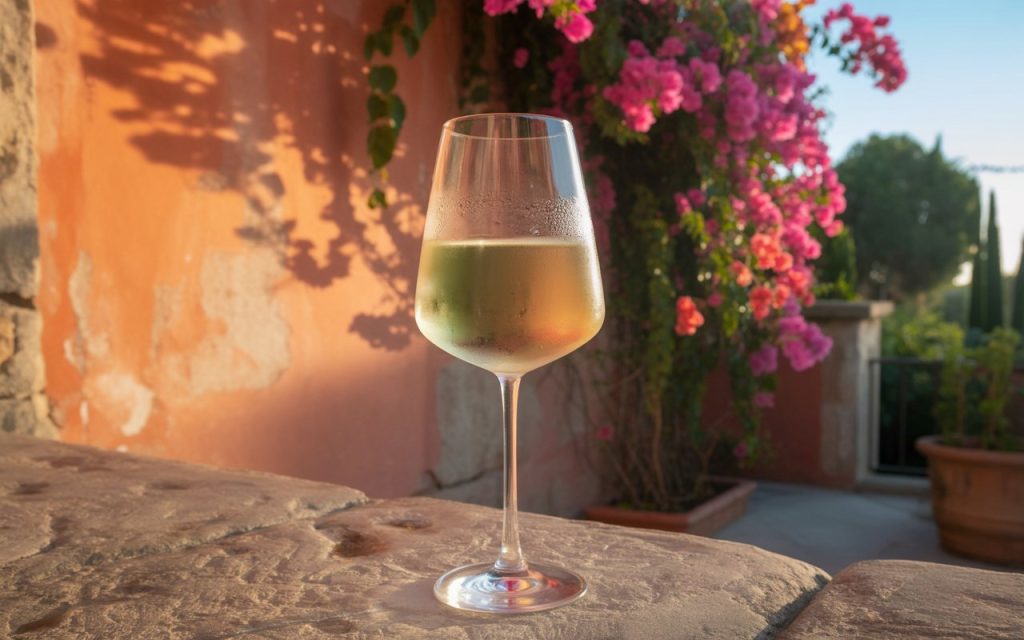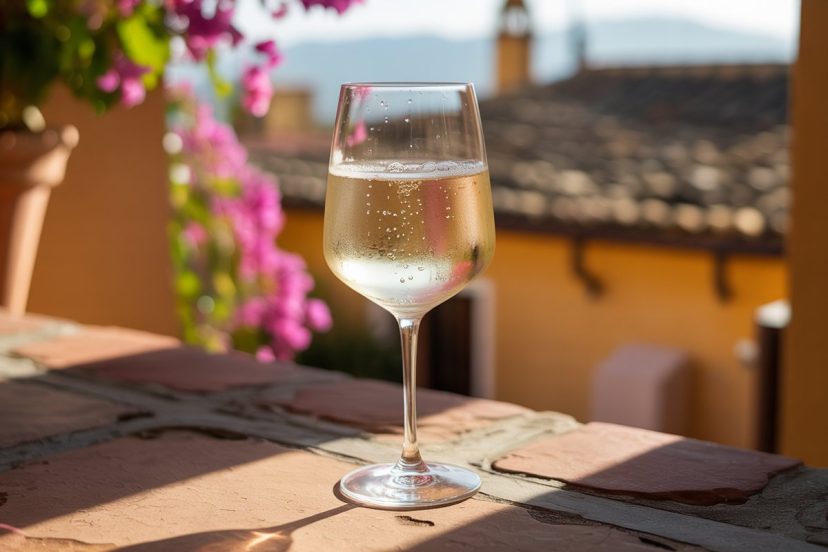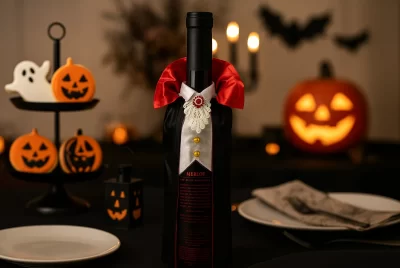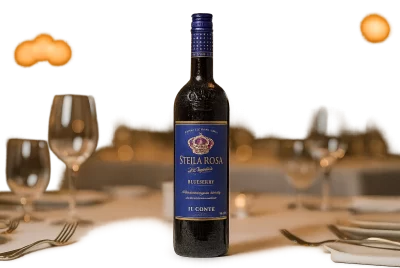Spanish White Wine Guide: Best Regions, Varieties & Pairings
Post Disclaimer
*We may earn a commission for purchases made using our links. Please see our disclosure to learn more.
There’s a moment when someone first tastes a truly exceptional Spanish white wine—when the crisp acidity hits the palate, the aromatic notes dance across the senses, and suddenly, a whole new world of flavor possibilities opens up. It’s a moment of quiet revelation, a discovery that Spain offers far more than just bold reds. This awakening often transforms the way people think about wine, challenging preconceptions and igniting a passion for exploring the lesser-known treasures of Spanish viticulture.
“Wine is the most civilized thing in the world.”
— Ernest Hemingway
Key Takeaways
- Spanish white wines offer exceptional quality and diversity, rivaling more traditionally celebrated wine regions worldwide
- Distinctive terroir and indigenous grape varieties give Spanish whites their unique character and complexity
- Value and accessibility make Spanish white wine an ideal choice for both beginners and seasoned enthusiasts
- Versatility in pairing allows these wines to complement an impressive range of cuisines and occasions
- Sustainable practices in many Spanish vineyards reflect a commitment to environmental stewardship
Recommended Spanish White Wine
Martin Codax Rias Baixas Albarino
Experience the vibrant taste of Spain with Martin Codax Rias Baixas Albariño, a celebrated Spanish white wine from the coastal region of Rías Baixas. Crafted from the finest Albariño grapes, this wine delivers bright aromas of pear, ripe apple, peach, and lemon zest. Its refreshing minerality and subtle hints of spice create a perfectly balanced flavor profile that’s both crisp and elegant. With a 13.5% alcohol content and a smooth, dry finish, it’s ideal for seafood, light pasta, or simply sipping on a warm afternoon.
The Martin Codax Rias Baixas Albariño stands out as one of the finest examples of Spanish white wine, offering a taste of Spain’s Atlantic coast in every sip. Known for its crisp acidity and aromatic fruit flavors, this Albariño captures the essence of Rías Baixas—a region famous for producing exceptional white wines. Its bright notes of pear, peach, and citrus make it a versatile choice for pairing with seafood, tapas, or Mediterranean cuisine. For wine enthusiasts seeking a refreshing and authentic Spanish white wine, Martin Codax Albariño delivers elegance, balance, and quality in every bottle.
- Flavor Profile: Crisp, fruity notes with refreshing acidity and minerality.
- Versatility: Pairs beautifully with seafood, salads, and light dishes.
- Authenticity: Crafted in Rías Baixas, Spain’s renowned Albariño region.
- Price: Slightly higher than other Spanish white wines in its class.
- Availability: May be harder to find in smaller wine shops.
- Sweetness Level: Too dry for those who prefer sweeter white wines.
Jorge Ordonez Selections La Cana Albarino
Discover the refined character of Jorge Ordoñez Selections La Caña Albariño, a premium Spanish white wine from Galicia, Spain. This Albariño showcases bright citrus aromas and delicate floral notes balanced by crisp acidity and a smooth texture. With a 12.5% alcohol content, it delivers a refreshing, medium-bodied taste perfect for warm evenings or seafood dinners. Each bottle reflects the craftsmanship of Spain’s coastal winemaking traditions, offering purity, elegance, and exceptional value.
The Jorge Ordoñez Selections La Caña Albariño exemplifies the finesse and freshness that define top-tier Spanish white wines. Produced in Galicia’s coastal vineyards, this Albariño offers a lively mix of citrus, green apple, and floral aromas with a clean, mineral-driven finish. Its light yet expressive character makes it perfect for pairing with seafood and salads or enjoying as a crisp aperitif. As one of the standout names in Spain’s Albariño scene, La Caña embodies the quality and tradition that make Spanish white wine so beloved among wine enthusiasts worldwide.
- Taste Profile: Bright citrus, floral notes, and crisp acidity for a refreshing experience.
- Authenticity: Crafted in Galicia, a top region for Spanish white wine production.
- Pairing: Excellent match with shellfish, sushi, or light Mediterranean cuisine.
- Availability: Limited distribution makes it less common in local stores.
- Price Point: Slightly premium compared to mass-market Spanish white wines.
- Complexity: May be too subtle for those who prefer bolder, oak-aged flavors.
El Terrano Albarino
Experience the lively charm of El Terrano Albariño, a refreshing Spanish white wine from the famed Rías Baixas region in northwest Spain. Crafted by winemakers Hugo Rodrigues and Jorge M. Dominguez, this wine captures the essence of the Atlantic coast with juicy flavors of citrus, nectarine, and honeydew, highlighted by a subtle saline minerality. With an alcohol content of 11.5%, it’s crisp, tangy, and wonderfully balanced — perfect for pairing with oysters, ceviche, paella, or creamy cheeses like burrata and goat cheese. A true reflection of Spain’s coastal terroir in every glass.
The El Terrano Albariño is a standout example of affordable yet high-quality Spanish white wine from the Rías Baixas region. Known for its crisp acidity and coastal freshness, this Albariño delivers layers of citrus, nectarine, and honeydew, underscored by a saline minerality that speaks to its Atlantic origins. Its bright and zesty profile makes it the perfect companion for seafood, from oysters to paella, or for casual sipping on warm days. For those seeking a refreshing and expressive Spanish white wine, El Terrano Albariño offers remarkable flavor, balance, and value in every bottle.
- Flavor Profile: Bright citrus and melon notes with refreshing coastal minerality.
- Pairing Flexibility: Complements seafood, light cheeses, and Mediterranean dishes.
- Value: Affordable price for a quality Spanish white wine from Rías Baixas.
- Light Body: May be too delicate for those who prefer full-bodied wines.
- Acidity: Its tangy finish might not suit sweeter wine preferences.
- Availability: Vintage can vary, affecting flavor consistency.
Piccini Orvieto Classico Doc
Savor the elegance of Piccini Orvieto Classico DOC, a refined white wine that delivers the freshness and balance loved by fans of Spanish white wines. Crafted from Italy’s classic Orvieto region, this wine features subtle floral aromas, gentle minerality, and notes of pear and green apple. With a 12% ABV and a light, crisp finish, it’s a perfect match for seafood, light pasta, or grilled vegetables. Piccini’s long-standing winemaking tradition brings a Mediterranean flair to every sip—clean, versatile, and refreshingly smooth.
While technically an Italian creation, the Piccini Orvieto Classico DOC appeals to anyone who enjoys the refreshing style of Spanish white wine. With crisp acidity, delicate fruit notes, and a smooth, dry finish, this Orvieto mirrors the balance and drinkability found in Spain’s Albariño and Verdejo wines. Its approachable flavor makes it ideal for casual sipping or pairing with seafood, salads, and soft cheeses. For wine lovers seeking the charm of Mediterranean whites at an accessible price, Piccini Orvieto Classico DOC offers a delightful alternative to traditional Spanish white wines.
- Flavor Balance: Light, crisp, and easy to drink with gentle fruit notes.
- Versatility: Pairs beautifully with light meals and seafood dishes.
- Value: Budget-friendly choice offering consistent quality.
- Origin: Not a true Spanish white wine, as it’s produced in Italy.
- Body: May feel too mild for those who prefer richer, complex wines.
- Aroma: Lighter bouquet compared to premium European white wines.
The Emotional Connection to Spanish Terroir
For wine lovers seeking authenticity and character, Spanish white wines represent something profound. These wines emerge from ancient terroirs—sun-drenched vineyards perched on cliffsides overlooking the Atlantic, rolling hills in central Spain, and Mediterranean coastal regions. Each location imprints its identity onto the wine, creating beverages that tell stories of climate, soil composition, and centuries of winemaking tradition.
The emotional journey of discovering Spanish white wine often begins with a sense of revelation. Many people grow up believing that European whites must come from France or Germany, only to stumble upon a Spanish Albariño that proves more refreshing than anything they’ve experienced before. This moment—when expectation meets reality—marks the beginning of a deeper exploration into what Spain’s wine regions have to offer.
What makes this journey particularly compelling is the accessibility factor. Spanish white wines deliver world-class quality at prices that make them attainable for everyday enjoyment, not just special occasions. This democratization of fine wine creates an emotional connection based on gratitude and enthusiasm rather than exclusivity or intimidation.
Understanding Spanish White Wine Regions and Grape Varieties
The Diversity of Spanish Whites
Spain produces an impressive array of white wines, each reflecting its unique regional characteristics. The primary distinction lies in the grape varieties and the specific terroirs from which they emerge, creating a beautiful spectrum of flavors and styles.
Albariño from Rías Baixas represents one of Spain’s most internationally recognized whites. Grown in Galicia’s northwestern corner, this wine thrives in cool Atlantic breezes and granite soils. The resulting beverage exhibits a pale golden color, vibrant acidity, and distinctive saline minerality that evokes the ocean itself. Notes of green apple, peach, and white flowers make Albariño a sensory experience that transports drinkers to the windswept Galician coast.
Verdejo from Rueda offers a contrasting profile. Central Spain’s Rueda region produces this wine in higher altitudes with cooler nights, which preserve acidity while building body. Verdejo wines showcase stone fruit, citrus, and occasionally herbaceous or grassy notes. They possess a richness that sets them apart from lighter, more delicate whites, making them excellent companions for richer foods and more substantial dishes.
Txakoli from the Basque Country brings a playful effervescence to Spanish white wine culture. This slightly sparkling, low-alcohol wine captures the spirit of coastal Basque traditions, delivering bright acidity and mineral qualities. It’s often served chilled from a height to create its characteristic spritz—a ritual that embodies the joy and community surrounding wine culture in Spain.
Beyond these primary varieties, Spain cultivates Godello in Galicia and Airén in La Mancha, each contributing distinct characteristics to the country’s white wine portfolio. This diversity ensures that explorers of Spanish whites will discover options matching virtually any preference or occasion.
The Journey of Spanish Wine Culture
Understanding Spanish white wine requires acknowledging the cultural context in which these wines develop. Spain’s wine tradition spans thousands of years, yet Spanish whites remained relatively unknown internationally until recent decades. This historical trajectory mirrors a broader journey of recognition and appreciation.
For generations, Spanish wine culture prioritized red wines and fortified styles like Sherry. However, changing climate patterns, technological advances in winemaking, and a new generation of vintners committed to quality revolutionized Spanish white wine production. These changes created an emotional narrative of rediscovery—both for Spain itself and for wine enthusiasts worldwide discovering what they’d been missing.
The Transformation: From Underrated to Essential
Why Spanish White Wines Matter
The journey from overlooking Spanish whites to celebrating them reflects broader shifts in how wine lovers approach their hobby. Many people discover that pursuing a comprehensive wine education means exploring beyond traditional European powerhouses. This realization—that great wine exists in unexpected places—transforms perspectives and expands palates.
Spain’s white wines challenge assumptions in several meaningful ways. These wines prove that excellent quality doesn’t require astronomical prices. Native grape varieties demonstrate that terroir can be expressed as powerfully as internationally recognized varietals. Modern winemakers show that innovation and tradition coexist beautifully when both heritage and new techniques are honored.
This transformation affects more than just wine consumption patterns. People often report that exploring Spanish wines sparks curiosity about Spanish culture more broadly—its food, music, history, and values. Wine becomes a gateway to deeper cultural understanding and appreciation, creating connections that extend far beyond the glass.

The Practical Benefits of Spanish White Wine Exploration
Beyond the emotional and cultural dimensions, Spanish white wines offer tangible practical advantages. Their versatility in food pairing means they complement everything from tapas and seafood to Mediterranean salads and light poultry dishes. This adaptability makes them ideal for entertaining, where a single bottle can satisfy varied palates.
The value proposition cannot be overstated. Spanish whites deliver complexity, depth, and character comparable to wines costing significantly more from other regions. For those working within budget constraints while refusing to compromise on quality, Spanish whites represent an ideal solution. This accessibility democratizes wine culture, inviting broader participation without guilt or compromise.
Exploration of Spanish whites also fosters community connection. Wine enthusiasts discovering these wines often share their enthusiasm with friends and family, creating collective experiences of tasting and appreciation. Sharing a bottle of Albariño becomes an act of generosity—introducing others to something special without requiring them to spend substantially. This communal aspect reinforces the emotional resonance many feel toward Spanish wine culture.
Finding and Selecting Spanish White Wines
One significant challenge for newcomers involves simply locating Spanish white wines. While major wine retailers increasingly stock these options, availability varies by location. Many enthusiasts overcome this barrier by developing relationships with knowledgeable wine merchants who can guide selections and occasionally order specific bottles. Online retailers now make access even more straightforward, allowing direct delivery to most areas.
Choosing among options presents another hurdle. Without established familiarity with Spanish wines, selecting a bottle can feel overwhelming. The solution involves starting with well-known varieties like Albariño or Verdejo, then gradually exploring more obscure options. Reading producer notes, checking reviews, and consulting wine education resources help build knowledge and confidence in selection.
Pronunciation and Confidence
Many people feel self-conscious about pronunciation—how does one correctly say “Albariño” or “Txakoli”? This small anxiety often prevents them from ordering at restaurants or discussing wines with merchants. Recognizing that most wine professionals appreciate genuine interest regardless of pronunciation helps overcome this barrier. Learning the correct pronunciations gradually, through exposure and practice, builds confidence over time.
Storage and Serving
Proper storage and serving conditions matter for fully appreciating Spanish whites. Most benefit from cool, dark storage and benefit from chilling before consumption. Understanding these basics—how cold to serve (typically 45-55 degrees Fahrenheit), how to open bottles properly, and how long to keep opened wine—ensures optimal enjoyment and prevents disappointing experiences with improperly stored or served wines.
The Sensory Experience: Understanding Spanish White Wine Characteristics
Aromatic and Flavor Profiles
Spanish white wines deliver distinctive sensory experiences that reward careful attention. Albariño exhibits aromatic complexity—initial scents of stone fruits, citrus, and flowers give way to more subtle mineral, herbaceous, or oceanic notes. On the palate, the wine presents crisp acidity balanced by a fullness that suggests ripeness and quality. The finish lingers pleasantly, encouraging another sip.
Verdejo presents a richer aromatic profile, with dominant notes of stone fruits like peach or apricot, accompanied by citrus and occasionally tropical elements. The wine’s body—thicker and more substantial than Albariño—coats the mouth with flavor, while vibrant acidity prevents it from becoming heavy. This balance makes Verdejo food-friendly and satisfying.
Txakoli offers a more delicate, playful aromatic experience. Its effervescence and bright acidity create a sense of liveliness and freshness. Aromas tend toward green elements—apple, grass, herbs—creating an impression of vitality and youth. This wine encourages sipping and conversation rather than intense contemplation.
The Importance of Terroir
Understanding how specific locations shape Spanish white wines deepens appreciation. Albariño’s salinity emerges from Atlantic breezes and coastal influence. Verdejo’s richness develops through altitude and cooler nights. Txakoli’s minerality reflects granite-rich Basque soils. These connections between place and flavor remind drinkers that wine captures something beyond mere fermented grape juice—it preserves an essence of its homeland.
Sustainable Practices and Spanish Vineyards
An often-overlooked aspect of Spanish white wine culture involves environmental stewardship. Many Spanish producers embrace sustainable and organic practices, recognizing that long-term quality depends on healthy soil and ecosystems. This commitment reflects both practical understanding and deeper values—a recognition that wine connects humans to nature and carries responsibility toward environmental protection.
Exploring Spanish white wines, therefore, aligns with values held by environmentally conscious consumers. Supporting these producers means investing in agricultural practices that prioritize soil health, water conservation, and biodiversity. This alignment between personal consumption and environmental values creates additional meaning beyond simple flavor enjoyment.
Celebration and Community: The Joy of Spanish Wine Discovery
One meaningful aspect of discovering quality Spanish white wines involves celebrating progress and sharing enthusiasm. Whether someone celebrates their first successful hosting of a Spanish wine tasting, their first purchase of a wine based purely on personal preference, or their growing ability to distinguish between different Spanish styles, these milestones deserve acknowledgment.
Community connection deepens through participation in wine tastings, online forums discussing Spanish wines, or simply sharing bottles with friends. These activities transform wine from a solitary consumption experience into something communal and connective. The joy of introducing a friend to their first Albariño, of planning a Spanish wine and food evening, of building a personal wine collection—these experiences create memories and strengthen relationships.
Building Your Spanish White Wine Journey
Starting Your Exploration
Beginning a Spanish white wine journey need not feel intimidating. Start with approachable, well-known varieties. Visit a local wine retailer and ask for recommendations. Many shopkeepers enthusiastically guide newcomers, knowing that fostering genuine appreciation builds long-term customers and enriches the wine community.
Taste wines at various temperatures and with different foods to understand their versatility and complexity. Notice how acidity, fruit, and minerality interact. Read labels and producer notes. Join online wine communities or local tasting groups. These steps gradually build knowledge and confidence.
Reflecting on Your Progress
As familiarity grows, take time to reflect on the journey. Notice how preferences evolve, how palate sensitivity increases, how wine becomes integrated into social and cultural life. Celebrate discoveries—both of specific wines and of broader understanding. Share this enthusiasm with others, recognizing that genuine passion proves contagious and community-building.
Conclusion: The Ongoing Exploration
The journey into Spanish white wine represents far more than acquiring knowledge about viticulture or tasting notes. It involves developing relationships with distant places, discovering connection through flavor and tradition, and joining a community of people who value quality, authenticity, and cultural appreciation. Spanish whites offer beauty, accessibility, and the promise of ongoing discovery—because even long-time enthusiasts continue finding new expressions, new producers, and new ways to appreciate these remarkable beverages.
The story of Spanish white wine is ultimately a story about revelation, appreciation, and the richness that emerges when we venture beyond familiar territory. Whether beginning this journey or continuing deeper exploration, every bottle holds potential—potential for joy, for memory-making, for connection. That potential is what makes Spanish white wine truly worth discovering.
Frequently Asked Questions
1. What is the best Spanish white wine for beginners?
Albariño from Rías Baixas represents an excellent starting point. Its crisp, refreshing profile appeals to many palates, and its growing international recognition means it’s widely available. The wine’s mineral character and clear flavor profile make it an ideal introduction to Spanish whites without overwhelming newcomers.
2. How should Spanish white wine be stored?
Store Spanish white wines in a cool, dark location with consistent temperature (ideally 45-65°F). Keep bottles on their sides to keep corks moist. Most Spanish whites are meant for consumption within a few years of purchase rather than long-term aging. Avoid storing near light sources or heat sources that can degrade wine quality.
3. What foods pair best with Spanish white wines?
Albariño pairs beautifully with seafood, shellfish, and light fish dishes. Verdejo complements richer seafood preparations, Mediterranean vegetables, and white meats. Txakoli works well with tapas, light appetizers, and casual meals. Generally, Spanish whites’ acidity makes them versatile partners for most foods, though they particularly excel with Spanish cuisine and Mediterranean flavors.
4. What’s the difference between Spanish white wine and white wine from other regions?
Spanish whites typically feature distinctive indigenous grape varieties, unique terroir expressions, and different winemaking traditions than French or German whites. Many Spanish whites showcase higher alcohol content and more pronounced fruit characteristics. The growing conditions—sun, altitude, coastal influences—create flavor profiles distinct from other European regions.
5. Are Spanish white wines suitable for aging?
Most Spanish white wines are meant for consumption within 2-5 years of vintage, focusing on their bright, fresh characteristics. However, some premium expressions and fortified whites like Sherry can age gracefully for years or decades. Check producer recommendations and tasting notes to determine whether a specific bottle benefits from aging or should be enjoyed immediately.















